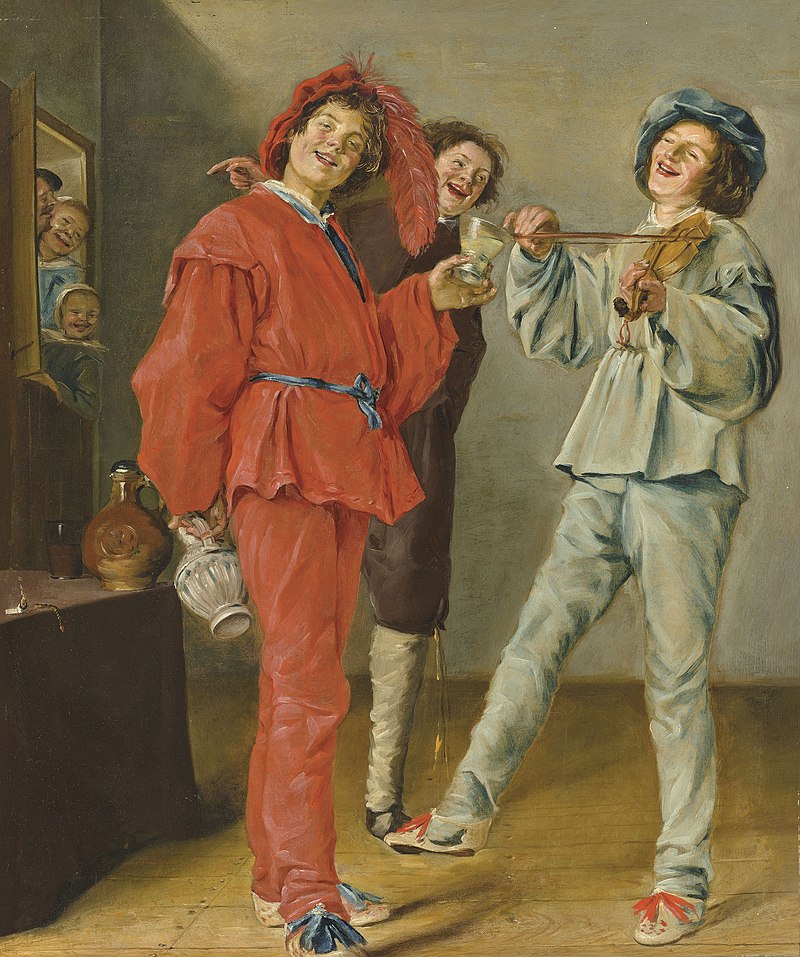It is impossible to look at Judith Leyster's (1609-60) self portrait and not want to know more about her both as an artist and as a woman. She twists towards us, head tilted, mouth open, eager to engage us in conversation, perhaps to explain what she is painting. The brushes and palette sit easily in her fingers: her thumb, little more than an inelegant smear, grips strongly; the little figure on the brushes has a delicate lightness. The ruff around her neck generates a swirl of movement; somehow what should be a restrictive item of clothing instead becomes a character trait of liveliness. It's all a pose, of course, she would never paint in such formal clothes; the picture on the easel has already been changed from a self portrait to one of her more marketable genre pieces. But it's also believably down to earth. This is a woman without vanity, a woman capable of competing with men, a woman who can be her own boss.
And then we learn that this is also the woman who gave up painting when she married, a woman who spent the rest of her life simply supporting her husband's career. There is the crux of the problem with women artists - are they victims or trail-blazers, are they competing with men or displaced by them? Can they ever just be women who paint?
For the first twenty-seven years of her life Judith Leyster was a feminist icon. Unlike many women artists she did not just fall into the profession accidently, the daughter of a painter who provided cheap studio labour and apprenticeship for the family business. Her teacher, Frans Pietersz de Grebber's own daughter, Maria, had a moderately successful career through just such a route. Perhaps it was the presence of another young woman which made Leyster's father choose de Grebber when he decided Judith should learn the trade, a financially motivated decision after his own business went bankrupt.
Leyster was soon making a name for herself. By 1635, she was the only female member of the Haarlem Guild of St Luke; she had her own studio and apprentices; she was competing with Frans Hals. For six or seven brief years, she seemed capable of carving out a career. Yet we have tantalisingly few works on which to base this assumption. Even allowing for those lost to time, she never seems to have been prolific (and you needed to churn the art out to survive in the competitive marketplace of seventeenth century Haarlem). The works we do have are varied and variable, as if the twentysomething Leyster was still finding herself, and her buyers. She produces exuberant, loose-brushed figures like those of Frans Hals', like that self portrait. She has a good line in more humorous genre groups, like those of Hals' brother Dirck, or indeed of Jan Miense Molenaer, her future husband.
Her most exciting, innovative works are those which seem to take their inspiration from Utrecht, where Caravaggio's drama, compositional tricks and chiaroscuro were being emulated. Leyster's Serenade with its backlit theatricality and immediacy of performance is full of such elements, and the halo-effect is genuinely innovative, but her quieter explorations of light, using a single flame are even more effective. In A Game of Cards, the light source is only visible in reflection, the shadowy interior seems safe and warming rather than sinister; the apron-wearing woman, perhaps a servant having a rare moment of leisure, seems an involved equal in the game, looking across to an unseen companion with the same open expression we see in Leyster's self portrait.






No comments:
Post a Comment